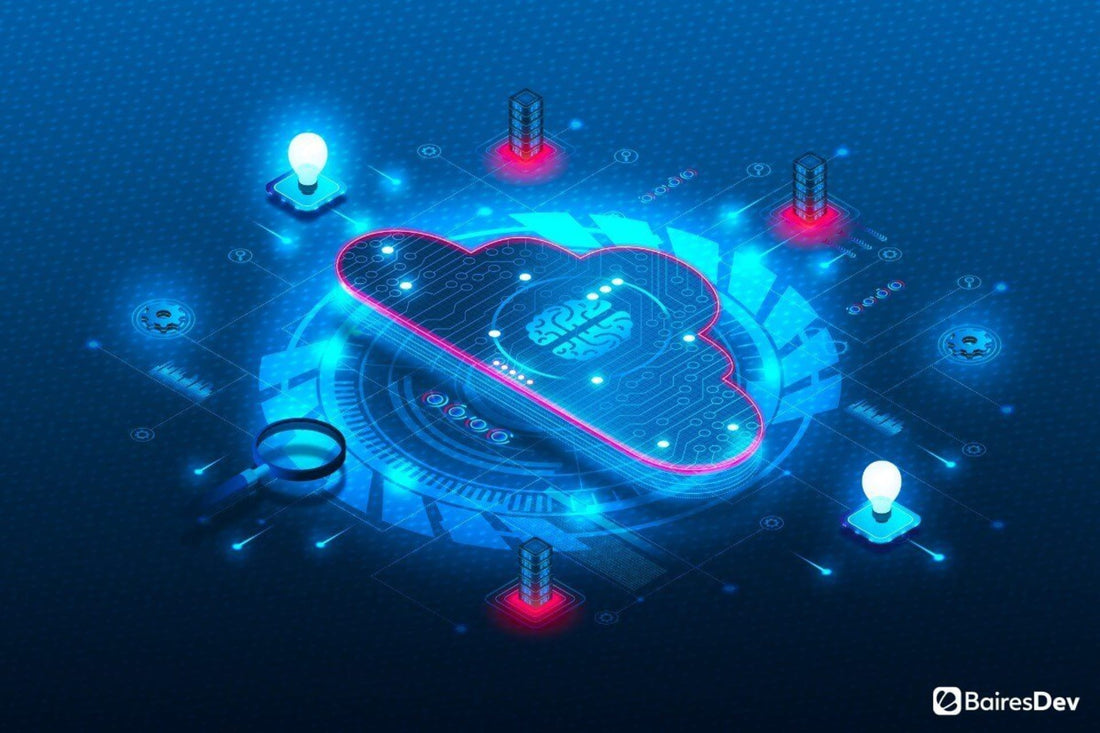A vital tool for storing, scaling and improving cloud services, hyperscale has had a global impact. In 2022, it's only growing — and thriving.

By 2022, the global hyperscale data center market is projected to reach $71.2 billion at a CAGR of 20.7% from 2016–2022.
A vital tool for storing, scaling, and improving cloud services, hyperscale and its associated data centers have had a global impact, with all major cloud service providers and many small and medium-sized ones adopting the concept to accommodate the massive of data they support.
What's new and emerging in the world of hyperscale?
What, exactly, is hyperscale?
Hyperscale is a concept that refers to the ability of a technological infrastructure to scale its cloud computing systems as it gains or loses resources, data and servers. It is essential to meet the demands of organizations, especially in a world loaded with data. By adopting hyperscale, organizations can achieve several benefits, such as stronger performance and reduced possibility of system failures or downtime.
Hyperscale is commonly referred to together with data centers. There is an advantage to using hyperscale data centers, especially for large organizations that deal with big data and large amounts of information.
Thanks to this system, companies have an easier time limiting redundancies, finding data and making it readily available, establishing strong security protocols, and maintaining cost-effective procedures and infrastructure.
How it works?
Hyperscale involves a network of servers that are added or subtracted as demand demands. There are also stipulated performance requirements. Resource capacity can be adjusted without additional hardware or equipment. The design is simple and can efficiently regulate the flow of information across horizontal and integrated networks.
Providers like Facebook, Amazon, Google and other tech giants leverage hyperscale to govern the flow of data – and scale their networks accordingly.
What is a hyperscale data center?
A hyperscale data center is much larger than typical data centers, generally with the capacity to store millions of servers. They are physically huge, occupying thousands upon thousands of square feet, and can accommodate massive amounts of data traffic.
The infrastructure is simple, with a design that speeds up the flow of information and allows customization to meet the organization's demands. The hyperscale and data management process is fully automated.
Hyperscale Trends in 2022
1. Unprecedented growth
Data centers in general are exploding as organizations of all types and sizes generate and store enormous amounts of data. In the highly digital era, hyperscale data centers are becoming the ideal resource for companies to manage these vast amounts of information .
Many experts predict that the need for hyperscale data centers will increase in 2022 as organizations expand and seek to accommodate more and more information. Demand spans countries and continents, while businesses face greater demands for higher speeds.
Companies will need to form new partnerships and work closely with hyperscale data center providers to accommodate the growing demand for these services.
2. Green data centers
Sustainability models are, of course, critical in all aspects. Currently, there is an increasing emphasis on green technology – including the construction and development of green data centers. The Worldwide Hyperscale Data Center Market report identifies this trend as one of the many reasons why hyperscale data centers have become so important.
These data centers, in contrast to their more traditional counterparts, offer more environmentally friendly infrastructure and techniques. Their reliance on cloud computing over complex, energy-inefficient machinery and architecture allows companies to accommodate large amounts of data without contributing to a larger carbon footprint.
In fact, a Pique Research report recently found that cloud computing alone could have reduced IT's global carbon footprint by 38% – and green data centers would play a key role.
3. IoT and hyperscale
The Internet of Things (IoT) is not a new concept – it has become an increasingly present element in our daily and professional lives at an accelerated pace in recent years. But as IoT grows and evolves into a new phenomenon, affecting people and businesses around the world, it is generating an unprecedented amount of data.
As IoT expands, finding solutions to protect sensitive information at scale is critical. Hyperscale data centers provide a robust and secure capability to host, transfer, and otherwise leverage data. That's why these 2 concepts are so compatible and can transform the very nature of the way we manage our information.
4. Geographic Emphasis
One factor that developers need to pay attention to is location. According to Kevin Facinelli at Nortek , developers look for geographic areas where there is an abundance of water and energy resources, as well as “favorable” climates. But these restrictions can be quite limiting.
“One solution that offsets all of these challenges is the specification of refrigeration equipment that operates efficiently in almost any resource-challenged climatic or geographic area,” said Facinelli. And thanks to new advancements, we could have technology that can power hyperscale data centers in places with “unfavorable” climates and resources. They have the potential to exist and operate virtually anywhere.
This is beneficial for data protection and flow, as most locations want to limit and control the transport of information and keep it within their borders.
Hyperscale is contributing to — and, in many ways, driving — a revolution in data management . As a new era of big data emerges, we are witnessing unprecedented growth in the generation and dissemination of information. Hyperscale is a critical model for protecting, storing and regulating important information and a tool that companies of all sizes are increasingly adopting. This will be a revolutionary year for the rise of hyperscale.




















































